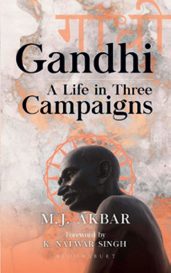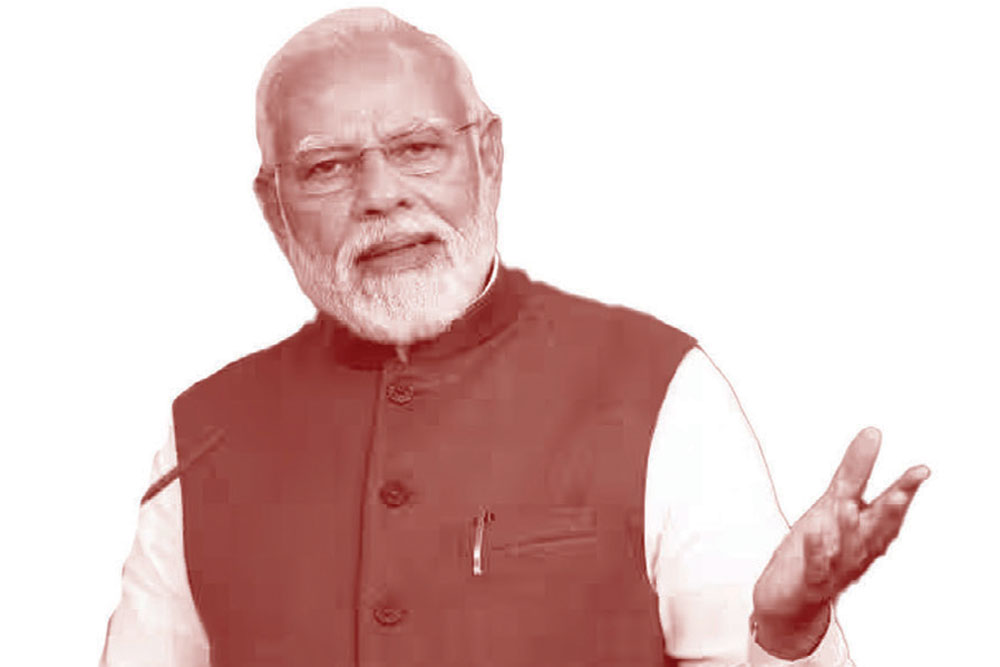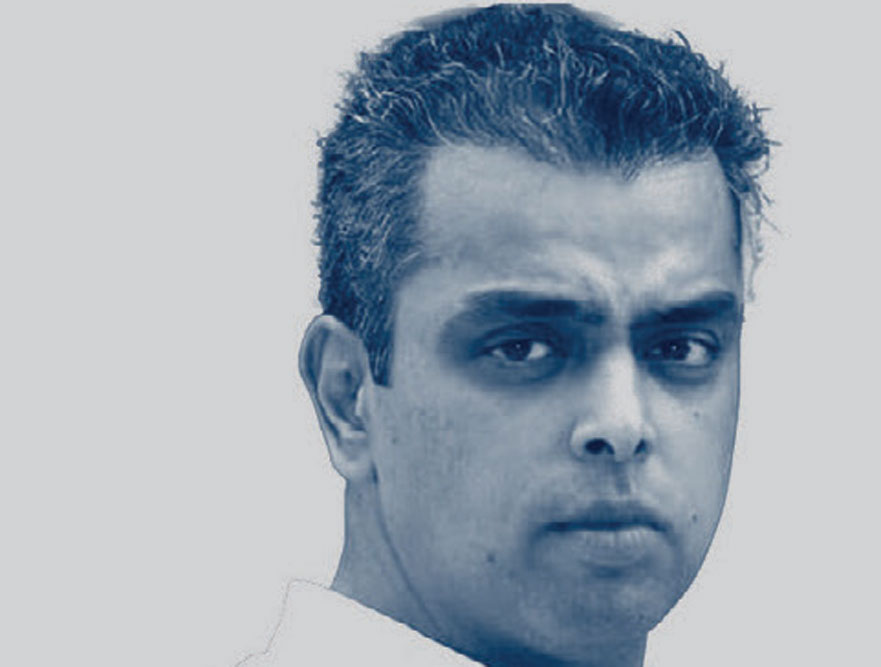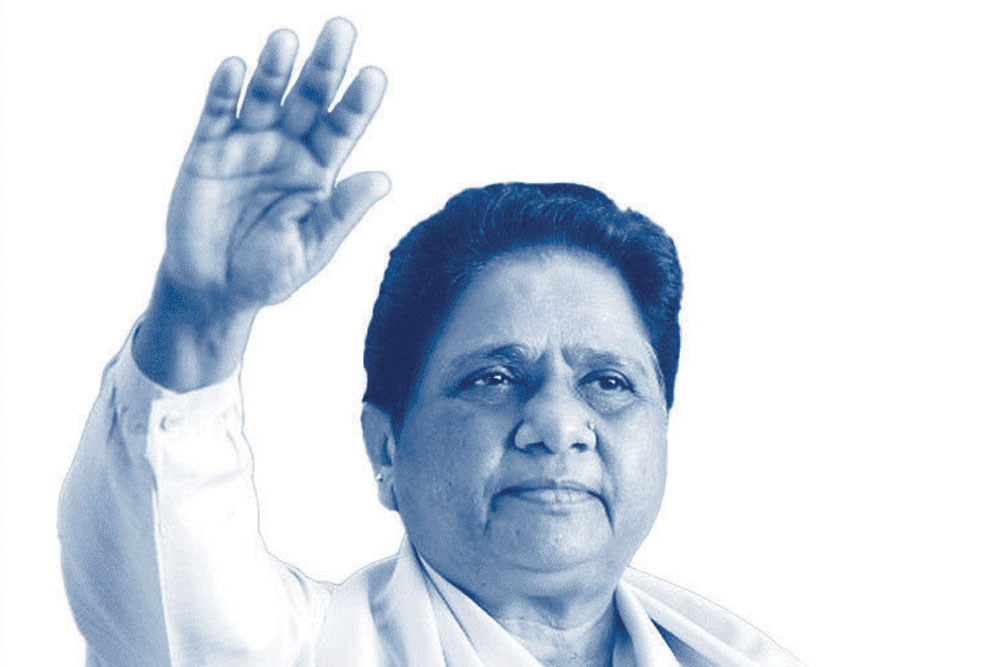Columns | Insider
Gandhi’s Soft Power
A combination of hard and soft power is often described as “smart power” and this, if applied judiciously, often delivers the best results
 Open
Open
 Open
19 Jan, 2024
Open
19 Jan, 2024
![]()
(Illustrations: Saurabh Singh)
NSA Ajit Doval’s public engagements are few and far between. Though he has spoken in public and on official forums about geopolitics, India’s security challenges, and social issues, his public appearances are infrequent and so the turnout at the Nehru Museum and Library Society (now Prime Ministers’ Museum and Library Society) for the book release event of author and journalist MJ Akbar last week was not surprising given that Doval was listed to speak alongside Hardeep Singh Puri (Union minister of petroleum, and housing and urban affairs), Ram Bahadur Rai (president of the Indira Gandhi National Centre for the Arts) and Kerala Governor Arif Mohammad Khan who is no small draw himself.

Speaking on the theme of Akbar’s book, Gandhi: A Life in Three Campaigns, Doval used more contemporary power theories to examine the Mahatma’s struggle. Gandhi’s opposition to the mighty British Empire was a case of “asymmetric warfare” and should be studied for the tools the leader employed. Gandhi well understood the limits of force or armed struggle and while he did not condemn revolutionaries, he did not think the use of arms would achieve nationalist ends, Doval said. Gandhi’s use of intensely evocative symbols and Satyagraha leveraged what Harvard scholar Joseph Nye much later categorised as ‘soft power’, according to Doval. “It is all about how to get the other to do what you want,” the NSA said, explaining the “moral force” Gandhi brought to bear on the colonial government through non-cooperation and by reminding the rulers of their own commitments to law and human dignity at home in England. A combination of hard and soft power is often described as “smart power” and this, if applied judiciously, often delivers the best results, Doval said. He did not refer to any particular decision or instance but it did seem to be the mantra the Modi government has employed in dealing with challenges in India’s neighbourhood that have confounded successive governments at the Centre.
Message In a Missed Call

In the 2014 Lok Sabha campaign, BJP used a simple and innovative method to mobilise support for candidate Narendra Modi. The ‘missed call’ campaign involved those wanting to pledge support to call certain numbers to register their ‘vote’ for Modi. The campaign was a success and by the time the election ended on May 12, more than one crore callers had dialled the ‘NaMo for PM’ platform. BJP call centres had returned the calls seeking contact details, including voter ID numbers to track the votes of supporters all the way to the polling booth. On January 13 this year, BJP’s youth wing BJYM launched a campaign to connect with new (that is, young) voters through the ‘NaMo Navmatdata Registration Portal (New Voters for NaMo)’ which will work on the basis of a dedicated missed call number. The reprising of the missed call strategy is intended to connect BJP with what it sees as a core demographic and one that is open to ideas that resonate with growth and opportunity. As of January 14, more than 2.2 crore students had registered for the seventh edition of Modi’s Pariksha pe Charcha (discussion on examinations) scheduled for January 29.
Guaranteed Delivery

About a month after BJP governments were sworn in, in Rajasthan, Madhya Pradesh and Chhattisgarh, the administrations have publicised the work done to deliver on ‘Modi ki Guarantee’ poll pledges by way of additional benefits in PDS and enrolment in welfare schemes. The idea is not just a PR splurge by the new governments but is intended to prepare the ground for the Lok Sabha campaign that is not far off. The ‘Modi ki Guarantee’ slogan is going to be a key part of the BJP campaign and the party is keen on cementing its identification with tangible benefits. The ongoing Viksit Bharat (Developed India) campaign that aims to create awareness and saturation coverage for government schemes is part of the strategy. The campaign covers all rural and urban governance bodies and aims to listen to common experiences of beneficiaries or applicants and to ensure enrolment of eligible citizens. Prime Minister Modi has exhorted the party to convey the message vigorously, particularly with reference to large migrant populations in cities who might miss out on information and availability of benefits due to being away from their residences.
Exit Deora

The exit of Milind Deora from Congress marks a steady progression of younger dynasts once seen to be close to Rahul Gandhi but who since have parted ways. One reason could well be Congress’ absence from office and a perception that the decline is not being arrested. While all those who left had their reasons, it is striking that Congress has been unable to find a place for the Rahul brigade that would sit with him in Lok Sabha. Union Civil Aviation Minister Jyotiraditya Scindia left after he found himself locked out by the Kamal Nath-Digvijaya Singh duo without either a state party post or a ministerial responsibility after Congress won the Madhya Pradesh Assembly election in 2018. The exits of Jitin Prasada and RPN Singh strengthened the perception that the Congress leadership has lost touch with what voters are thinking about while relentlessly opposing Prime Minister Modi. Singh is understood to have pointed out that the positive reaction of his constituency to the decision to abrogate Article 370 should be an eye-opener for the party bosses. Former Rajasthan Deputy Chief Minister Sachin Pilot almost left and his return failed to solve problems in the state unit and finally contributed to Congress’ ouster in the Assembly election late in 2023. Deora’s alienation, despite being named party joint treasurer, has been evident for a while and the possibility of the South Mumbai Lok Sabha seat going to Uddhav Thackeray’s Sena faction might have been the last straw.
Mayawati’s Hand

BSP chief Mayawati ended the suspense about her party’s options for the Lok Sabha polls by announcing that the Dalit outfit will go it alone and consider alliances after the results are out. This means the contest in Uttar Pradesh remains four-cornered among BJP, SP, the Congress-RLD combine, and BSP. Mayawati has shown no inclination to renew an alliance with SP (neither has the latter) and talks of a pact with Congress have simply never taken off. BJP spokespersons were quick to say that BSP’s announcement reduces Congress’ bargaining power with regard to SP as it can no longer dangle the Mayawati option. More damagingly though, the BSP decision indicates the party does not think Congress can bring much to the table in an alliance. The declaration is also in sync with Mayawati’s decision to steer clear of any move for opposition unity just like BJD and YSR-CP.
More Columns
What does the launch of a new political party with radical background mean for Punjab? Rahul Pandita
5 Proven Tips To Manage Pre-Diabetes Naturally Dr. Kriti Soni
Keeping Bangladesh at Bay Siddharth Singh